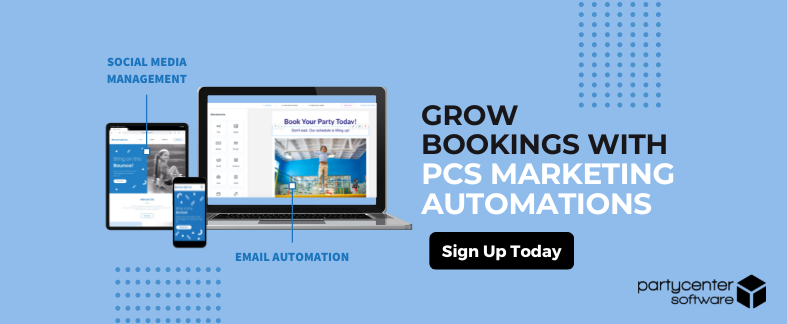Whether you're a small business owner, event venue operator, or the mastermind behind a family entertainment center, getting noticed on Google can feel like scaling a mountain. But climbing higher in search ads doesn’t have to mean having an incredibly high budget. The key? Boosting your Google Ads Quality Score.
Your Quality Score directly impacts where your ad appears and how much you pay per click. A higher score means lower costs and higher ad placement, which is exactly what you need to maximize ROI. This article breaks down actionable strategies to improve your Quality Score and help your business get in front of the right audience.
Let's dig in!

What Exactly Is a Google Ads Quality Score?
Google Ads Quality Score is a metric that evaluates how relevant your ad, keywords, and landing page are to a user searching Google. Scores range from 1 (poor) to 10 (excellent). A higher Quality Score indicates that Google views your ad as highly relevant, and, as a reward, you’ll enjoy lower costs-per-click (CPC) and a better ad ranking.
Essentially, the more aligned your ad experience is with searchers’ expectations, the higher your Quality Score will be. Now, here’s how to make that happen!
1. Include Relevant Keywords in Your Ad Copy
Keywords are the backbone of your ad campaigns. They determine which searches your ad will appear for, so choosing the right ones is non-negotiable. Here's how to do it effectively:
- Choose keywords relevant to your offerings: If you own an indoor play park, using keywords like "indoor playground birthday party" ensures you’re reaching users actively searching for what you offer.
- Create harmony between your ad and landing page: Use consistent wording between your ad copy and landing page. If your ad mentions "all-inclusive event packages," make sure the landing page highlights those offerings seamlessly.
- Optimize for mobile users: Most searches occur on mobile, so ensure your landing page is mobile-friendly and quick to load. Google's algorithm rewards mobile-optimized experiences.
When your copy feels genuine, on-point, and tailored to the intent behind a search query, your Quality Score rises.
2. Organize Your Ad Groups
A common mistake businesses make is cramming dozens of keywords into one ad group. Instead, Google recommends organizing your ad groups so each one focuses on a single theme or service.
For instance, if you’re a family entertainment center, you might create ad groups like:
- Birthday Parties
- Corporate Team Events
- Arcade Experiences
- Bounce Houses
- Indoor Play Center
- Laser Tag
Organize your ad groups with precision, target relevant keywords to each, and ensure each one leads to a matching landing page. This laser focus makes your ads more relevant, improves clickthrough rates (CTR), and boosts your Quality Score.
3. Optimize Your Landing Page
Your ad copy might be perfect, but if the landing page it links to is slow, irrelevant, or hard to navigate, users will click away—and your Quality Score will plummet.
Here’s a checklist for your landing page optimization:
- Mobile Optimization: Make sure the page displays beautifully and loads quickly on smartphones and tablets.
- Site Speed: Use tools like Google PageSpeed Insights to identify potential speed issues and fix them.
- Relevant Content: Ensure the messaging on the landing page matches the intent of the ad. For example, if your ad teases "Best Wedding Venue in [City Name]," your page should showcase wedding packages, photos, and testimonials.
- Encourage Action: Design clear call-to-action buttons (e.g., “Book a Free Tour” or “Request Your Package Today”) to make conversions easy.
Remember, a happy user experience = a happy Google algorithm. By optimizing your landing pages, you improve the user experience, prevent high bounce rates, and increase the likelihood of gaining a new customer. This affects your Quality Score in a positive way.

4. Improve Your Clickthrough Rates (CTR)
CTR is one of the most critical factors influencing Google Ads Quality Score. If people aren’t clicking on your ads, it signals to Google that they aren’t engaging with your content.
Here’s how to boost your CTR:
- Optimize Ad Copy: Use action-driven language that speaks directly to your audience's needs. For example, “Turn Your Event Into an Unforgettable Celebration” might perform better than “Try Our Event Packages.”
- Leverage Social Proof: Use phrases like “Rated #1 Indoor Play Park” or “Trusted by Over 1,000 Happy Brides.”
- Pause Non-performing Keywords: If certain keywords are draining your budget without clicks, pause them. Focus on high-performing ones instead.
If your CTR is 1.5% or lower, revisit your ads. Sometimes even minor tweaks to headlines or descriptions can lead to significant improvements.
5. Test Your Ads Regularly
One of the best ways to improve your Quality Score is by constantly testing and refining your ads. Split testing (also known as A/B testing) helps you identify what works and what doesn’t.
Here’s how to run effective tests:
- Test Headlines and Descriptions: Create variations to see which gets a better response.
- Experiment with Keywords: Try different keyword combinations to determine what resonates most.
- Run Tests Long Enough: Allow your ads to run for 2–3 weeks to collect enough data for meaningful insights.
Testing isn’t a one-time activity. Google’s algorithm changes, and so does user behavior. Frequent testing ensures your ads remain competitive.
Conclusion
By elevating your Google Ads Quality Score, you’re not just improving relevance—you’re optimizing your overall ad spend. A high score translates to more clicks, better conversions, and lower advertising costs.
Start implementing these strategies today, whether it’s tweaking your ad copy, refining your landing pages, or testing new ideas. The results will speak for themselves.
Need help managing your Google Ads campaigns? You're in luck! PCS now offers Digital Advertising Services.
Click this link and schedule a demo to get that conversation started!
